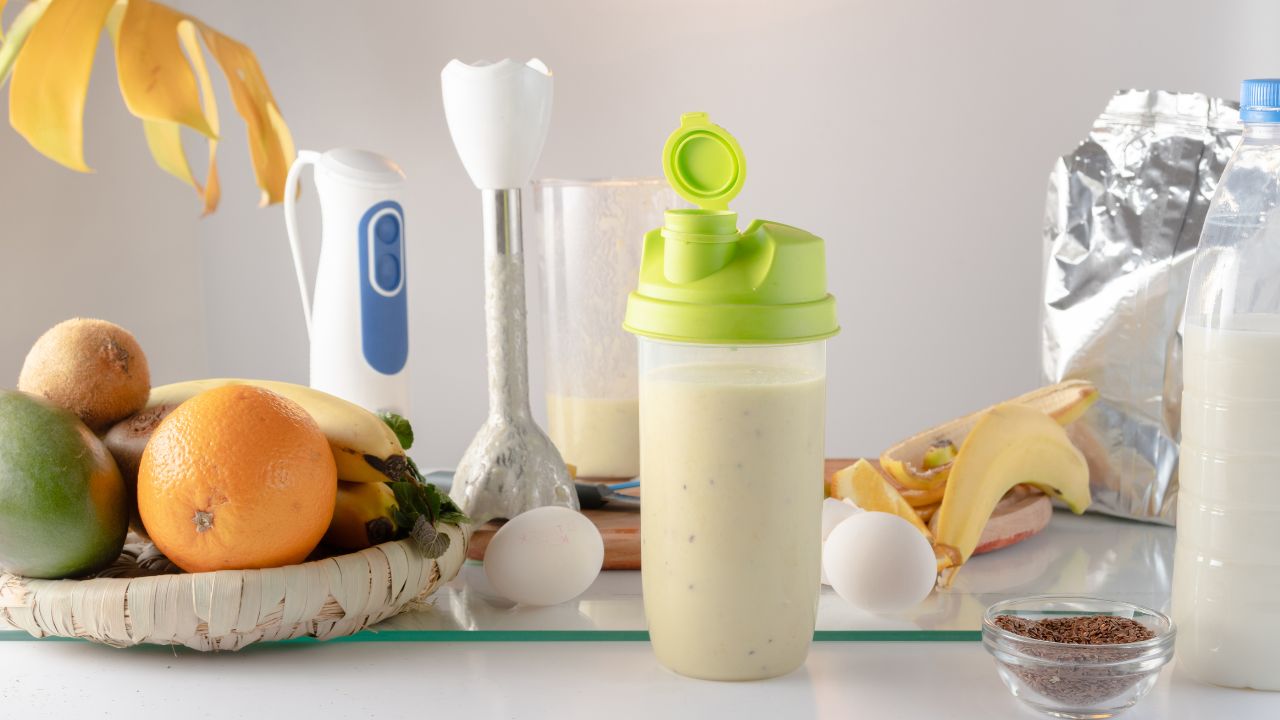Kayleigh shares articles on Society blog. She also blogs about her experiences in the workforce and how she set out to find a career she loved, which led her to work with an ethical employer. maemae believes that life is too short not to enjoy your job, and that there's no shame in pursuing a career you love!

People blend their protein shakes and supplements along with beverages inside shaker bottles for daily consumption.
Have you ever considered what materials make up your shaker bottle during drink mixing?
The selection of materials used in bottle production determines both the bottles’ look in daily use and their tactile properties and operational capabilities. The shaker bottle manufacturer must pick proper materials since these elements dictate both product safety ratings, durability, and ease of use.
The article investigates the main materials manufacturers utilize for shaker bottles while discussing their impact on both manufacturers and end-users.
Main Materials Used In Shaker Bottle Manufacturing
1. Plastic
Plastic stands as the primary material used for manufacturing shaker bottles. Plastic material offers lightweight strength alongside simple moldability. The majority of shaker bottles are manufactured with plastic use materials that do not contain BPA. The absence of BPA in plastic materials makes them safer for human health.
Types of Plastic Used:
- Polypropylene (PP) represents a strong plastic material that shows both durability and resistance to breaking. The material exhibits lightweight properties while staying resistant to breaking. PP shows great resistance to staining and odorous substances. The main bottle section typically receives this plastic material.
- Polyethylene exists in two forms, namely high-density (HDPE) and low-density (LDPE). Both are strong and flexible. High-density PE has greater stiffness than low-density PE, but maintains its flexible nature. The production of bottles together with their lids utilizes these two plastic materials.
- The special plastic Tritan stands out because of its exceptional clarity and superior strength characteristics. This material resists both staining and odor absorption. The material contains no BPA and remains safe when in contact with food.
- PETG, Acrylic, PCTG, and AS are plastic materials that bottles use for enhanced clarity and visual appeal. The materials are both safe to use with food and do not contain BPA.
Why Use Plastic?
- Lightweight and easy to carry
- Can be made in many shapes and colors
- Usually less expensive
- Does not break easily if dropped
2. Stainless Steel
High-end shaker bottles primarily use stainless steel as their preferred material. The material offers both high durability and strength features with resistance to rust and corrosion. Shaker bottles made from food-grade steel use materials that fall under 18/8 or 304 grade specifications. Bottles constructed of this material combine safety features with excellent drink compatibility alongside simple cleaning capabilities.
Benefits of Stainless Steel:
- Very durable and long-lasting
- Double-walled vacuum-insulated stainless steel bottles provide extended hot or cold retention for drinks.
- Does not retain odors or stains
- Looks sleek and modern
Why Choose Stainless Steel?
- Great for people who want a sturdy, reusable bottle
- Good for keeping drinks at the right temperature
- Often chosen for its premium feel
3. Glass
Certain shaker bottles use glass as their material base. Glass provides two advantages: it remains safe for use and prevents reactions between drinks, as well as odors and staining. People who seek pure taste should choose glass shaker bottles because they are simple to clean.
Benefits of Glass:
- Free from chemicals like BPA
- Does not absorb smells or colors
- Easy to clean and sanitize
Drawbacks:
- Heavier than plastic or steel
- Can break if dropped
4. Other Components
A shaker bottle is not just a bottle. It has other parts made from different materials:
- Most mixing balls used in the market consist of stainless steel. These tools create a perfect mixture between powdered substances and liquid components.
- The mesh screen integrated into certain bottles serves to split up clumps.
- The lid of shaker bottles typically consists of plastic which matches the bottle material or includes silicone for gentle sealing.
- The internal lid seal consists of either silicone or rubber materials. This keeps the bottle leak-proof.
5. Eco-Friendly and Recycled Materials
Manufacturers now produce shaker bottles with either recycled plastic or steel materials. The environmental impact decreases when people use such bottles because they create less waste. These bottles are identical to standard bottles yet require fewer resources to produce.
Choosing the Right Material
When picking a shaker bottle, think about:
- Safety: The bottle must be both BPA-free and food-safe.
- Durability: Stainless steel stands as the material that provides maximum longevity. When used for lightweight purposes, plastic works effectively.
- Weight: Plastic is the lightest. Glass is the heaviest.
- Insulation: Stainless steel bottles with insulation features become an excellent choice for maintaining drink temperatures.
- Taste: Glass and high-quality steel bottles do not impact the flavor of consumed substances.
Conclusion
The materials used for shaker bottles possess unique advantages. Plastic is light and cheap. The strength of stainless steel matches its ability to preserve proper drink temperature. Glass offers a pure and safe solution, but remains fragile. The bottle choice depends on your intended usage while considering your individual requirements. Find a bottle that offers secure handling, together with quick cleaning, and meets your daily requirements.
